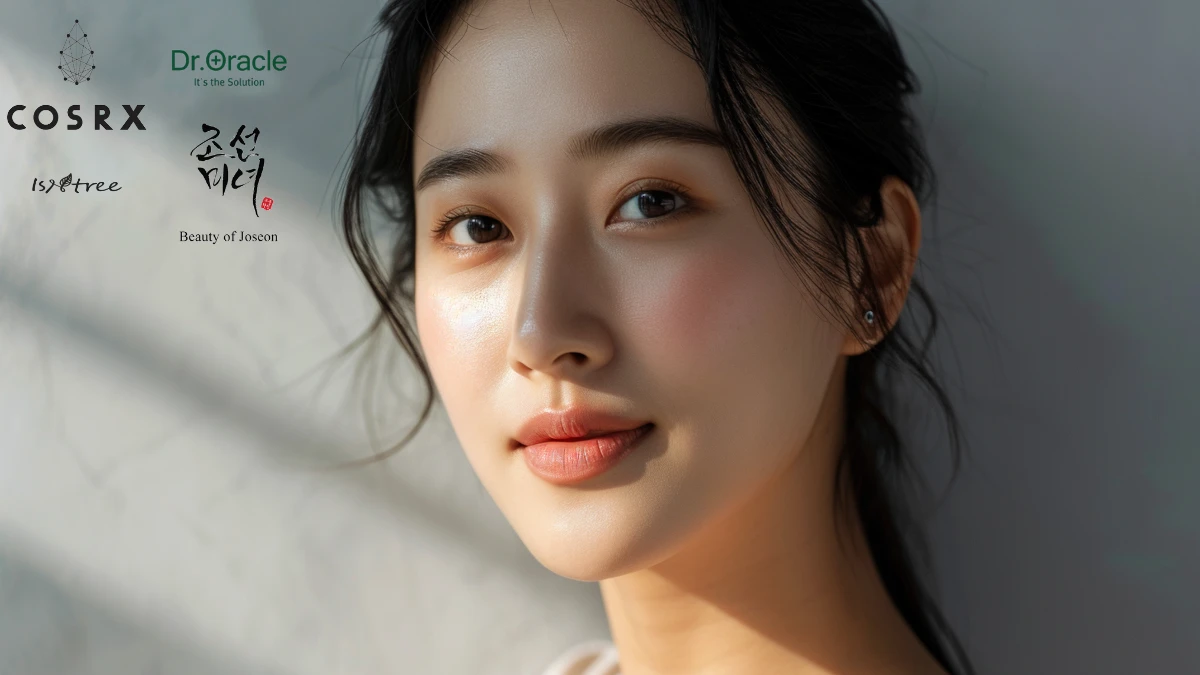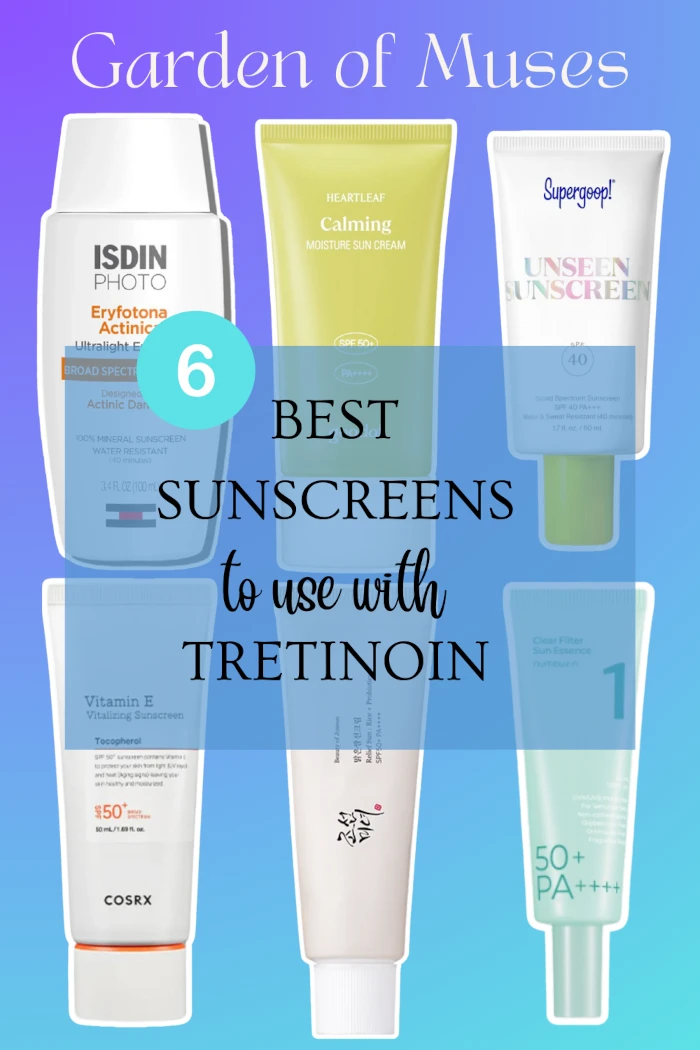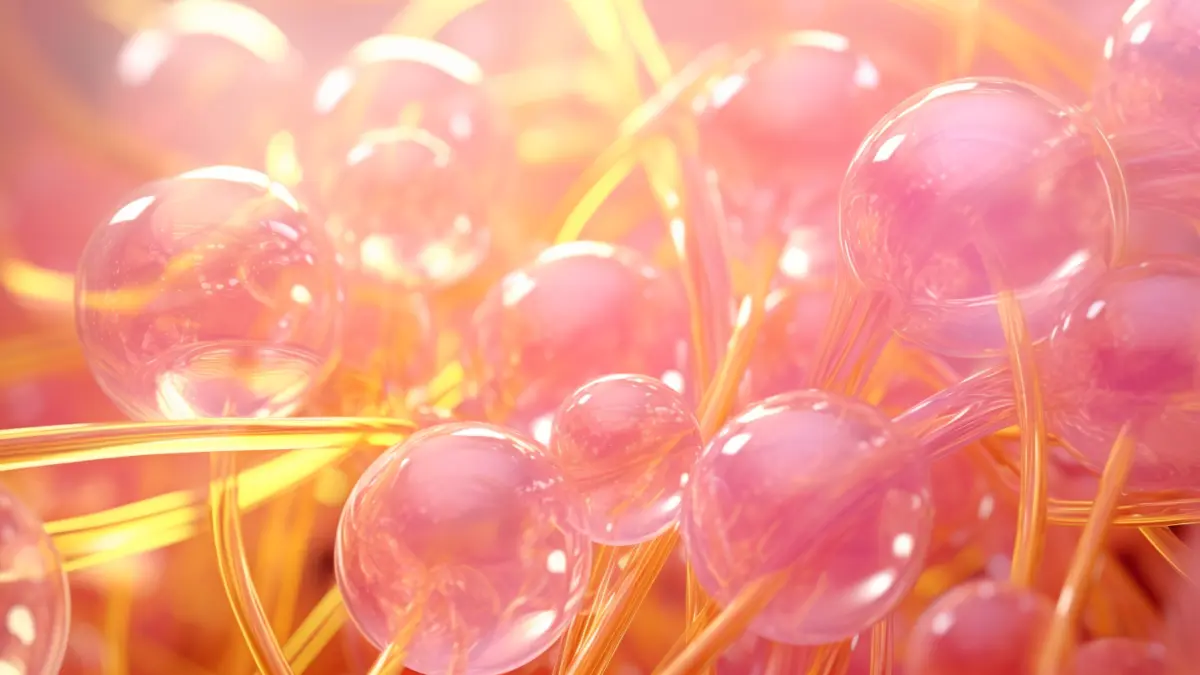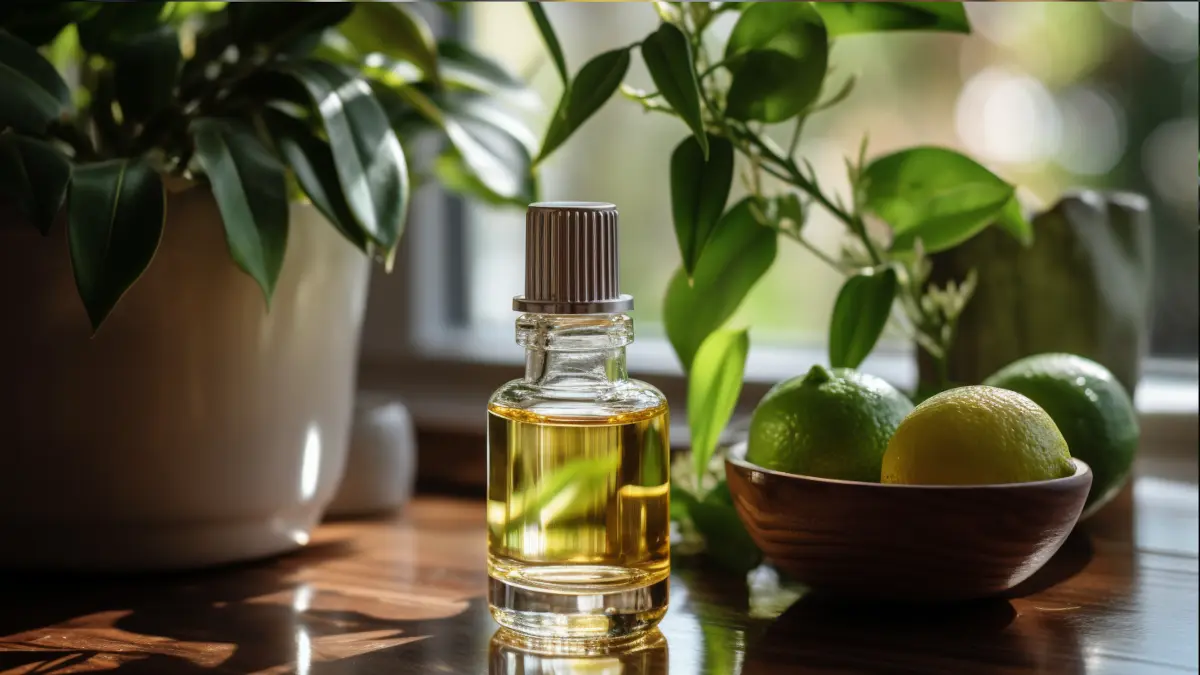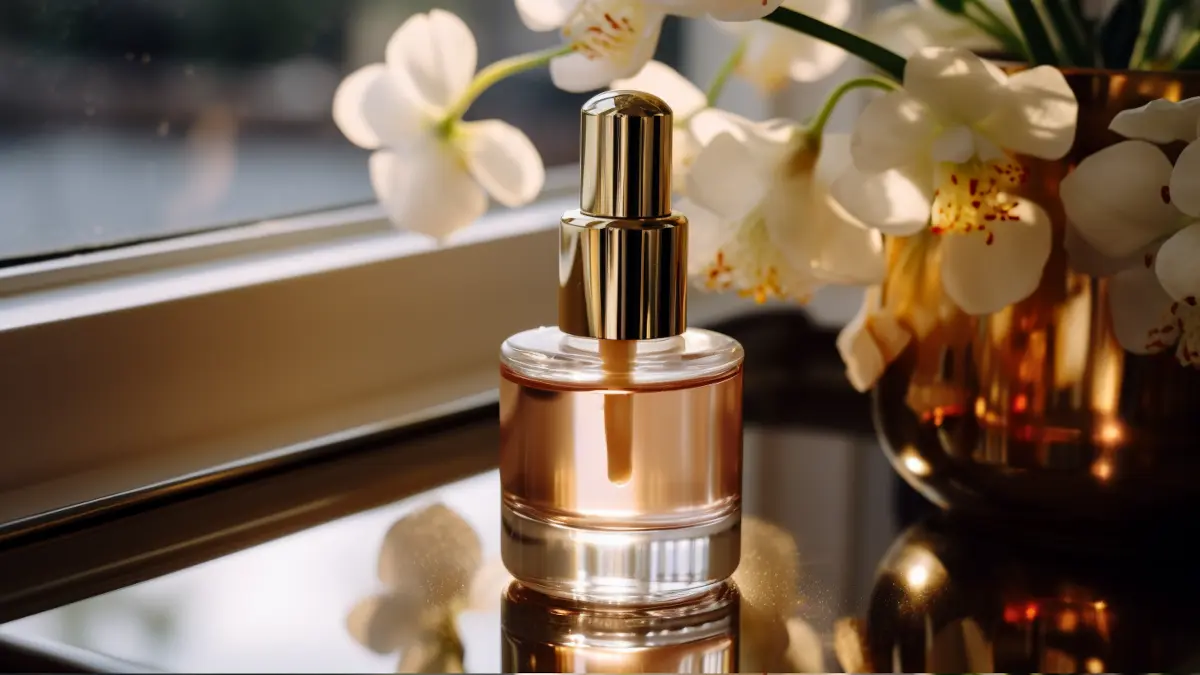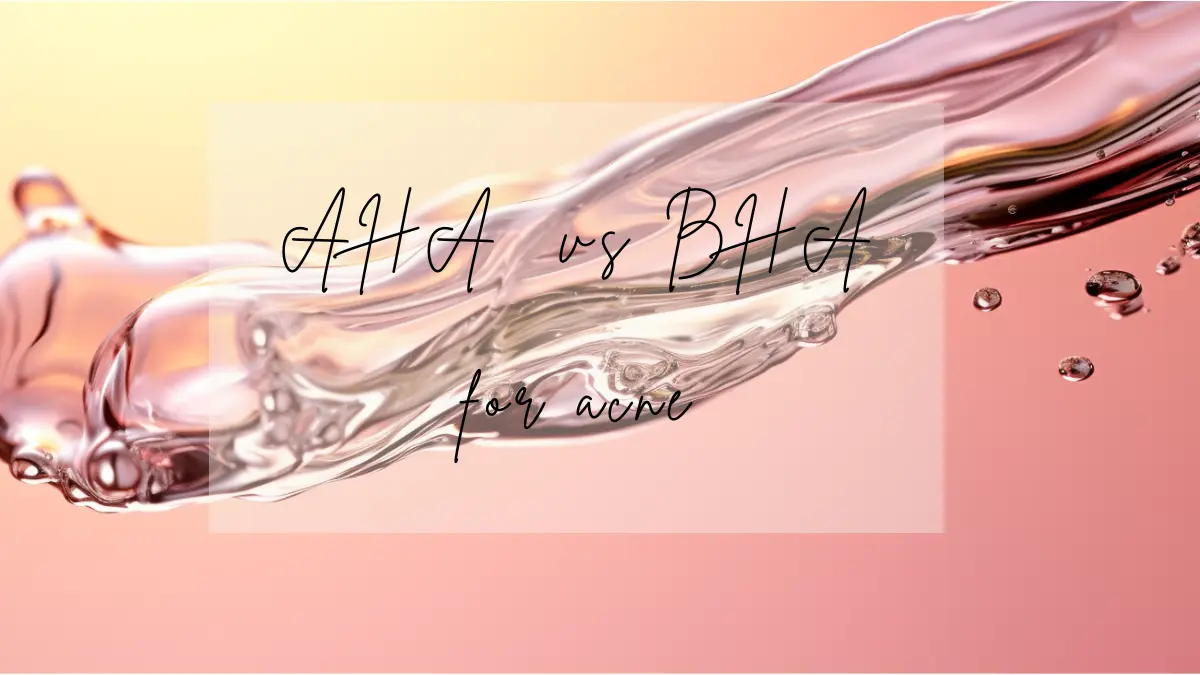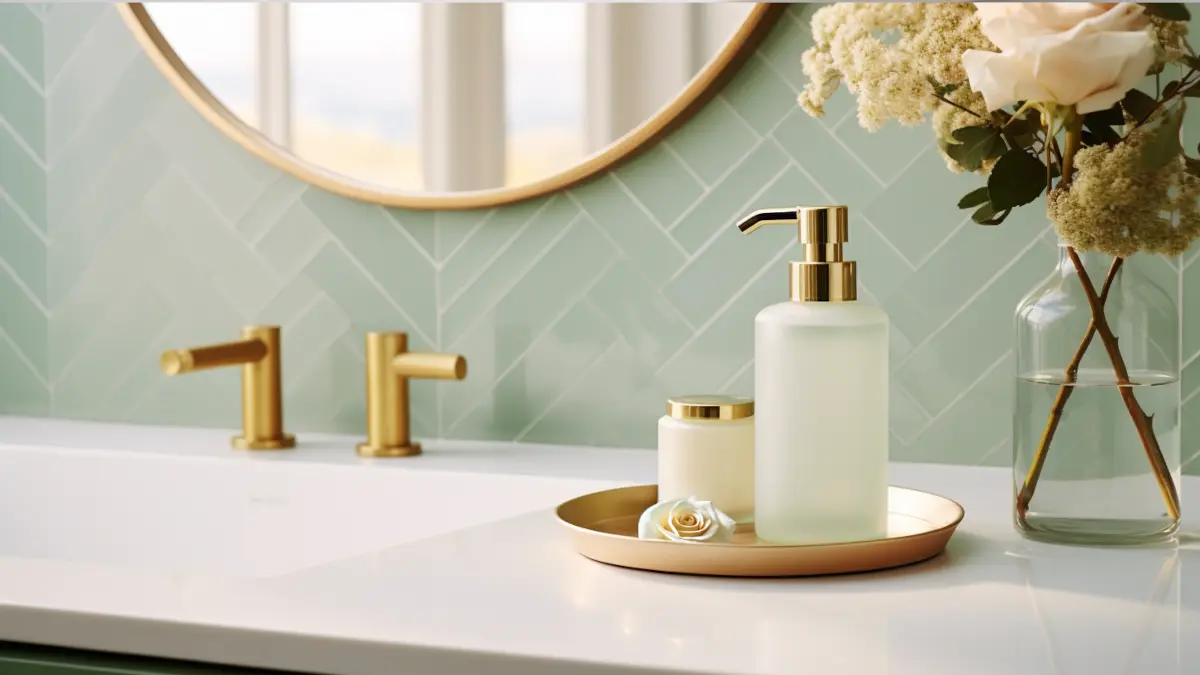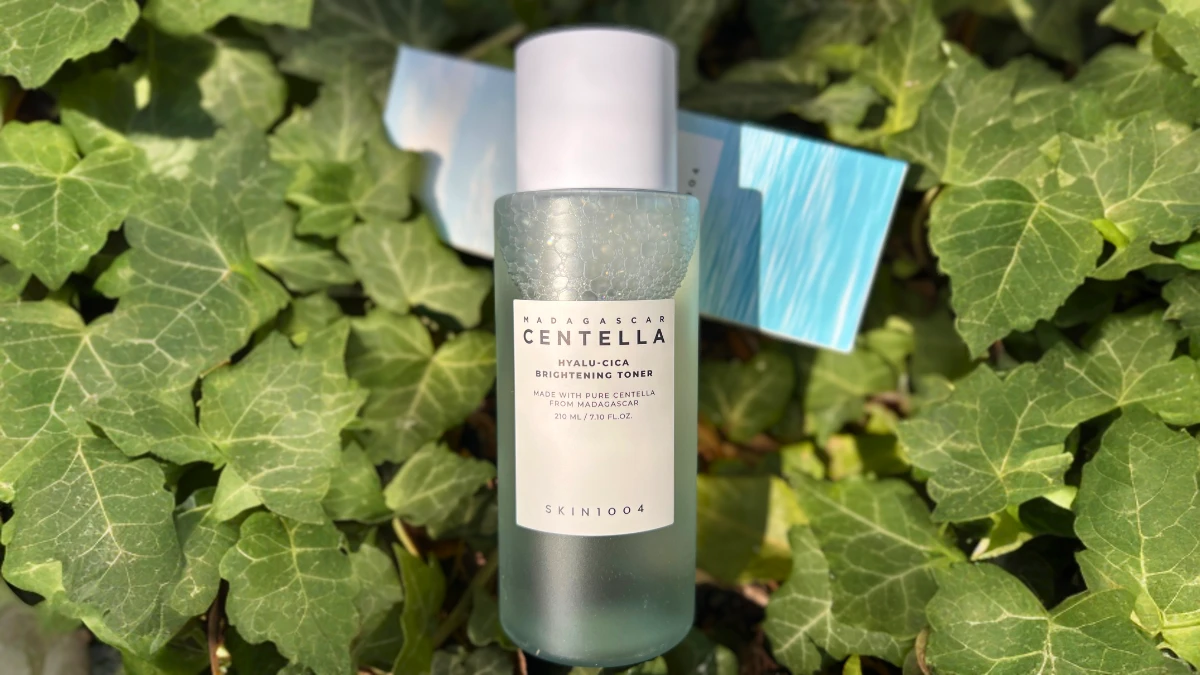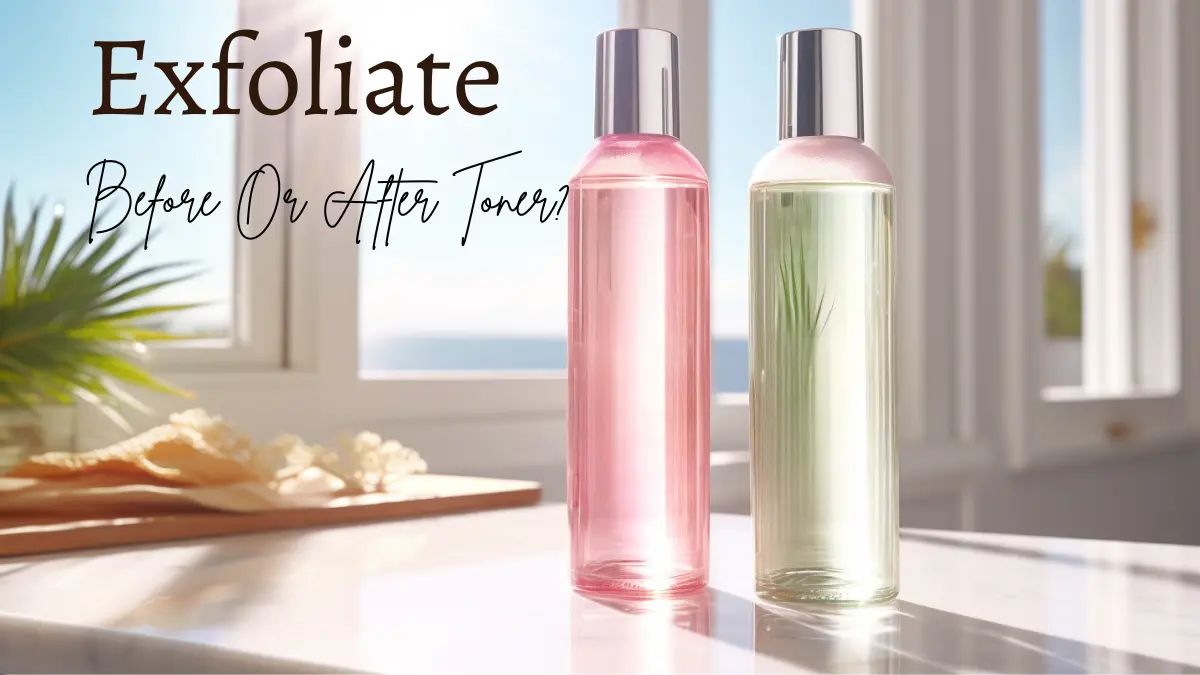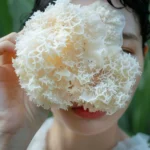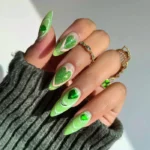As if acne isn’t torture enough and a blow to our self-esteem, we’re left with pesky marks on our skin known as post-inflammatory hyperpigmentation (or PIH for short). Can you eliminate post-inflammatory hyperpigmentation, and if so, what are the best ingredients and products for treating post-inflammatory hyperpigmentation?
What Is Post-Inflammatory Hyperpigmentation (PIH)?
So why do pimples leave us with post-inflammatory hyperpigmentation (PIH), and what is it exactly?
The simplest way I can describe it is to think of acne as a wound on the skin that triggers an inflammatory response. This inflammatory response includes the production of melanin, the pigment that gives skin its color. Your skin produces melanin to protect itself from the sun when it is damaged or has experienced trauma, as melanin absorbs most of the UV radiation that hits your skin.
The accumulation of melanin in the area where the skin was damaged by acne forms a noticeable dark mark or spot (brown or black) – a not-so-pleasant reminder of the breakout it just went through.
The darker your skin tone, the more susceptible your skin is to PIH due to overactive melanin-producing cells called melanocytes.
Post Inflammatory Hyperpigmentation (PIH) vs. Post Inflammatory Erythema (PIE)
It’s important to know what type of post-acne marks your skin has as their treatment differs.
Acne can leave two types of marks: post-inflammatory hyperpigmentation (PIH) and post-inflammatory erythema (PIE).
Although both result from the inflammation left by acne or other trauma to the skin, it’s vital to distinguish between the two as they require very different treatments.
As I’ve already mentioned, PIH is the melanin response to inflammation that looks like a brown or black mark in the place where the acne was. PIE, on the other hand, is a vascular response to inflammation caused by trauma to the skin, such as picking and popping pimples and red or purplish marks.
PIE appears red because damage or dilation to capillaries (tiny blood vessels) just under the skin’s surface creates a surge of blood in the area as a healing mechanism.
Conversely to PIH, post-inflammatory erythema is more noticeable on lighter skin tones, and the lighter the skin tone – the longer the PIE will remain.
You can have a mix of both PIH and PIE, and PIE can also turn into PIH if left untreated. In this post, I will only discuss how to treat post-inflammatory hyperpigmentation, the brown spots, which focuses on inhibiting melanin production and increasing the turnover rate of skin cells. These treatments, unfortunately, have no effect on PIE, the red marks, as the accumulation of melanin does not cause them.
Although PIE does eventually fade after time, there are currently only two research-backed methods that work well at treating it:
- Vascular lasers, which break and disperse broken blood vessels;
- Silicone sheets, which work to strengthen the skin’s moisture barrier.
See a dermatologist if you suspect you have PIE and want to speed up the fading process.

How Long Does Post-Inflammatory Hyperpigmentation Last?
Post-inflammatory hyperpigmentation usually isn’t permanent. However, on its own, it takes about 6-12 months to fade. Also, the darker the PIH, the longer it will take to go away.
I have good news, though! You can take a few simple steps to speed up this process, and I’ll be discussing these next, as well as giving you some product recommendations.
Best Ingredients for Treating Post-Inflammatory Hyperpigmentation
Keep reading if you’d like to know what skincare products work best at treating post-inflammatory hyperpigmentation.
Because Post-Inflammatory Hyperpigmentation is caused by an accumulation of melanin, treating it revolves around:
- Inhibiting tyrosinase. Tyrosinase is the enzyme located inside melanocytes that catalyzes the production of melanin. I’ll discuss shortly a few fantastic ingredients that limit melanin production by telling the enzyme tyrosinase to slow down. If tyrosinase isn’t doing its job, no melanin gets produced, and your skin has less hyperpigmentation.
- Increasing the turnover rate of skin cells so that the acne marks fade faster. This means that you’re increasing the speed at which your skin cells renew, meaning you’re shedding off old skin cells faster to reveal new ones without hyperpigmentation.
- Wearing sunscreen every single day to prevent any further production of melanin. If you could only choose one of these three steps, this is the most important. The previous two steps would be useless without the use of sunscreen simply because UV radiation leads to the production of melanin in skin cells, especially if the area of the skin has been damaged by acne.
Here’s a list of ingredients and products that are known to work well at either inhibiting tyrosinase or increasing cell turnover rate. They are listed from most effective to least effective in terms of scientific research available.
Hydroquinone
Hydroquinone has been shown to have the most notable effect on hyperpigmentation out of any other ingredient. It works by inhibiting tyrosinase activity and increasing the cytotoxicity of melanocytes, meaning it helps kill off cells that produce melanin.
So why are we wasting our time and money on all these other ingredients instead of hydroquinone?
Well, it turns out that there is some research suggesting that hydroquinone may act as a carcinogen (cancer-causing chemical). Although it’s yet to be proven if hydroquinone causes human cancer, it has been banned in some countries, although not the United States, where it can be sold in concentrations up to 2% in over-the-counter skincare products.
Hydroquinone also tends to be very irritating for sensitive skin types. Its effectiveness comes at a price. I would only use hydroquinone products as a last resort. There are so many other great ingredients in this list that are much safer and less irritating, albeit it might take more time and patience.
I, therefore, haven’t recommended any skincare products containing hydroquinone here, as I wouldn’t use them myself. I would recommend seeing a dermatologist if you want to try hydroquinone.
Retinoids (Retinoic Acid, Retinal, Retinol)
Retinoids are topical vitamin A-based products that are anti-aging holy grails.
You may have already heard of tretinoin (a prescription retinoic acid also called Retin-A), the first retinoid used on the skin. It was first used as an acne treatment in the 1970s. Research later found that it also can fade post-inflammatory hyperpigmentation and even out skin tone by increasing the turnover rate of skin cells.
If you’re over 30, like me, you might be interested to know that as well as fading hyperpigmentation, retinoic acid reduces fine lines and wrinkles by increasing collagen production.
Retinoids can cause skin dryness and irritation, so it’s advised to slowly work up to using retinoid-containing skincare products daily. You must also be extra mindful about wearing sunscreen daily if you’re using retinoids on your skin, as they increase the skin’s sensitivity to sunlight.
I’ve already mentioned tretinoin, which is a prescription topical retinoic acid. Other prescription retinoids, such as tazarotene (Avage, Tazorac) and adapalene (Differin), are available. However, if you want something less irritating, you can opt for skincare products containing retinol or retinal (vitamin A derivatives).
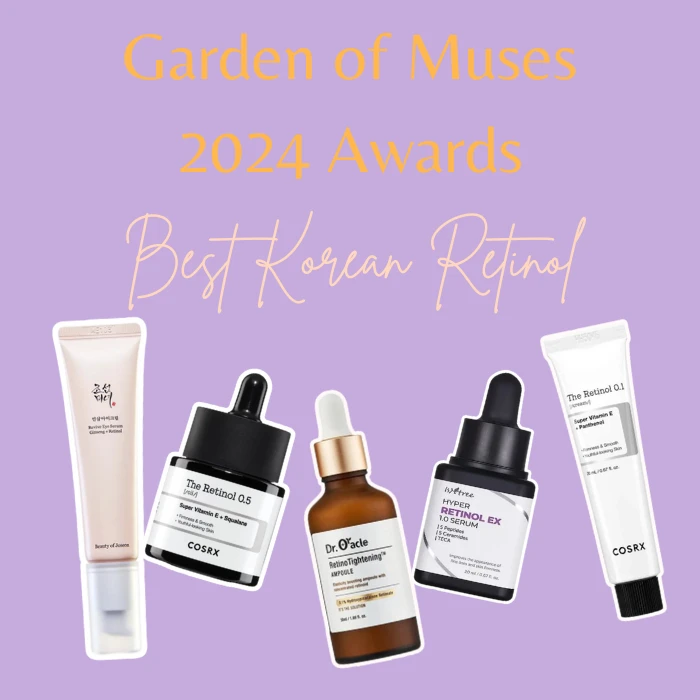
Although retinol and retinal are less potent than prescription retinoids, they still do wonders for the skin, including fading hyperpigmentation. They are less potent and, therefore, less irritating on the skin because they must first be converted into the active form, retinoic acid, via an enzymatic process in your skin.
Although retinol and retinal are less irritating than retinoic acid, in the past, Korean skincare companies shied away from using these vitamin A derivatives in skincare products. This is because they are still considered more aggressive than other skin-brightening ingredients, such as niacinamide and vitamin C, especially if you have sensitive or dry skin.
I’m happy to let you know that more and more Korean companies are developing retinol serums, and you will soon see our editor’s top picks.
Azelaic Acid
Azelaic acid doesn’t get the credit it deserves because so much research supports its effectiveness in treating many skin conditions.
Studies show that azelaic acid is good at helping to get rid of post-inflammatory hyperpigmentation, and it’s also great for treating mild to moderate acne and reducing skin sensitivity due to its anti-bacterial and anti-inflammatory properties.
Azelaic acid is available in prescription topical products, usually at 15-20% concentrations, or in cosmetic skincare products. The concentration of azelaic acid in cosmetic skincare products is generally lower than in prescription medication (10% or less).
This ingredient is difficult to formulate, and the texture can be grainy if not formulated correctly. However, the good news is that a 10% concentration can still improve skin hyperpigmentation.
The mechanism by which azelaic acid reduces hyperpigmentation is similar to hydroquinone. It fades post-inflammatory hyperpigmentation by inhibiting tyrosinase and abnormal melanocytes.
Kojic Acid
Certain species of fungi produce kojic acid during rice fermentation. It can depigment skin by suppressing the activity of tyrosinase.
Research suggests that kojic acid works best with other lightening agents, such as glycolic acid and hydroquinone.
Although kojic acid is very effective at fading hyperpigmentation, it may be better suited for fading pigmentation such as melasma and sun spots. There hasn’t been any research confirming its effectiveness at fading PIH, although I’ve read personal accounts from people who say that kojic acid did indeed help them get rid of their PIH.
A downside of kojic acid is that it is, unfortunately, very tricky to formulate, as it is an extremely unstable ingredient, meaning it loses its efficacy when exposed to sunlight and air.
Arbutin
Arbutin is a glucosylated hydroquinone derived from the leaves of fruits such as bearberry, although it can also be made synthetically.
Arbutin slowly breaks down into hydroquinone, fading post-inflammatory hyperpigmentation by blocking tyrosinase activity. Although it is a safer alternative to hydroquinone, if you’re pregnant or trying to conceive, you should play it super safe and not use arbutin in your skincare routine.
Much research confirms that arbutin is an effective ingredient for brightening post-inflammatory hyperpigmentation (PIH) and melasma. You can read more about how arbutin is good at fading sun spots, another form of hyperpigmentation.
Niacinamide
Regarding skincare, especially Korean skincare, niacinamide (vitamin B3) is a super-star ingredient. If you’re already using some Korean skincare products, it may be very likely that at least one of them contains niacinamide.
This is because niacinamide has multiple benefits when used on the skin, including:
- The ability to improve your skin’s moisture barrier, thereby keeping it hydrated for longer;
- The ability to reduce hyperpigmentation and even skin tone makes it a great first choice for fading post-inflammatory hyperpigmentation. Niacinamide works a bit differently from other skin-lightening ingredients, though. Rather than inhibiting tyrosinase activity, niacinamide inhibits melanosome transfer from melanocytes to keratinocytes. In simpler terms, niacinamide prevents melanin from reaching the outer layer of your skin.
- The ability to reduce the appearance of fine lines and wrinkles by increasing collagen production and its potent antioxidant properties, allowing it to soak up free radicals, which cause skin damage and premature aging.
- The ability to soothe the skin and decrease sensitivity, redness, and irritation, including rosacea. This is due to its moisture barrier-strengthening properties.
- The ability to reduce acne caused by the bacteria P. Acnes without any risk of bacterial resistance.
- Lastly, there is some evidence that niacinamide may be able to help reduce sebum production!
As you can see, this is why so many skincare products contain niacinamide. Since so much of Korean skincare is focused on skin-brightening and skin hydration, many products include niacinamide. Most are formulated with 2% to 5%, although now you can find up to 20% niacinamide.
Vitamin C
Vitamin C is one of the most effective ingredients for treating hyperpigmentation, including post-inflammatory hyperpigmentation.
There are a few important factors to consider when purchasing a vitamin C serum. First, vitamin C comes in many forms (I’ve written a post about them here). The most effective and commonly used form is L-ascorbic acid.
You can also find many products containing vitamin C derivatives, such as sodium ascorbyl phosphate and magnesium ascorbyl phosphate. However, these need to be converted to ascorbic acid in the skin first; therefore, they may not be as effective.
Studies have shown that serums formulated with 20% L-ascorbic acid (L-AA) have the most significant brightening effect on the skin. However, developing serums with such a high concentration of L-ascorbic acid is tricky as it is such an unstable ingredient in sunlight and oxygen. Therefore, I recommend looking for a vitamin C serum in a dark-colored glass dropper bottle.
I also recommend using a vitamin C serum formulated with vitamin E and ferulic acid, as these two additional ingredients significantly increase the effectiveness of L-ascorbic acid.
You can read more about why vitamin E and ferulic acid are so important in my post about vitamin C serums, which also explains when to use vitamin C serums in your skincare routine.
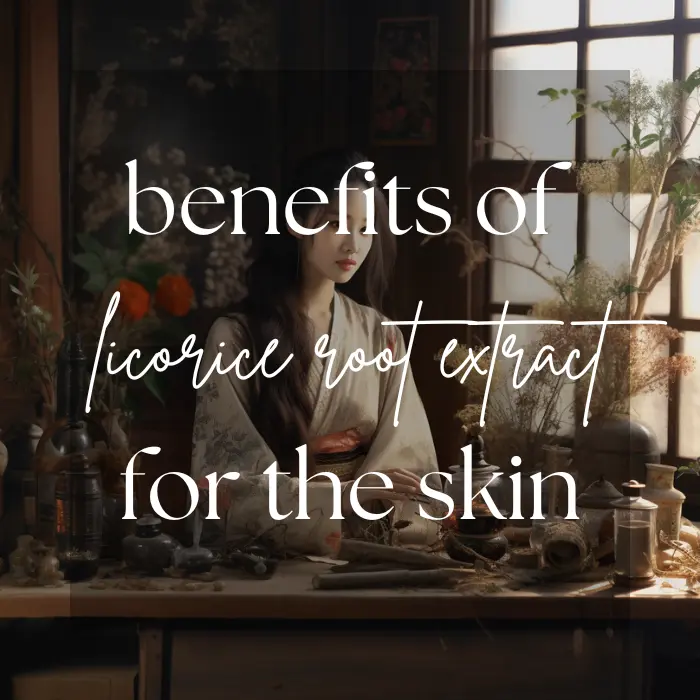
Licorice Root Extract
Licorice root has been used for thousands of years as a medicinal ingredient to treat many ailments. You may have even heard of licorice root tea, which is used to help relieve an upset stomach or a sore throat.
It turns out that licorice root also has many benefits when used on the skin. It contains many compounds, mainly flavonoids, that have been shown to have inhibitory effects on tyrosinase, making for great depigmenting ingredients. Glabridin is a compound found in licorice root with the most research behind it.
Licorice root also has anti-inflammatory and anti-irritant properties, which means it doesn’t produce some unwanted side effects that other ingredients, such as hydroquinone and kojic acid, have. This makes licorice root a fantastic skin-brightening ingredient for people with sensitive skin.
Luckily for us, many Korean skincare products containing licorice root are available. You’ll often find it paired with other skin-brightening ingredients like vitamin C.

AHAs – Glycolic Acid, Lactic Acid, Mandelic Acid
AHAs are one of the most effective ingredients for fading your post-inflammatory hyperpigmentation.
If you’ve been into Korean skincare for a while, you’ll have noticed that Alpha hydroxy acids (AHAs) are a staple ingredient in many people’s skincare routine.
This chemical exfoliant speeds up skin turnover by breaking up the substance that holds dead skin cells together. The words ‘chemical’ and ‘acid’ may conjure some fears about using AHAs in your skincare routine. However, you shouldn’t worry as they are very gentle unless you use them too often.
The most common type of AHA used in skincare products is glycolic acid, followed by lactic acid.
Mandelic acid is less commonly used as it is a gentler acid, so it takes much longer to see results. However, I have read some positive reviews from people using mandelic acid long-term to fade their post-inflammatory hyperpigmentation.
If you want to learn more about the benefits of mandelic acid for the skin, here is Alyssa‘s Guide:
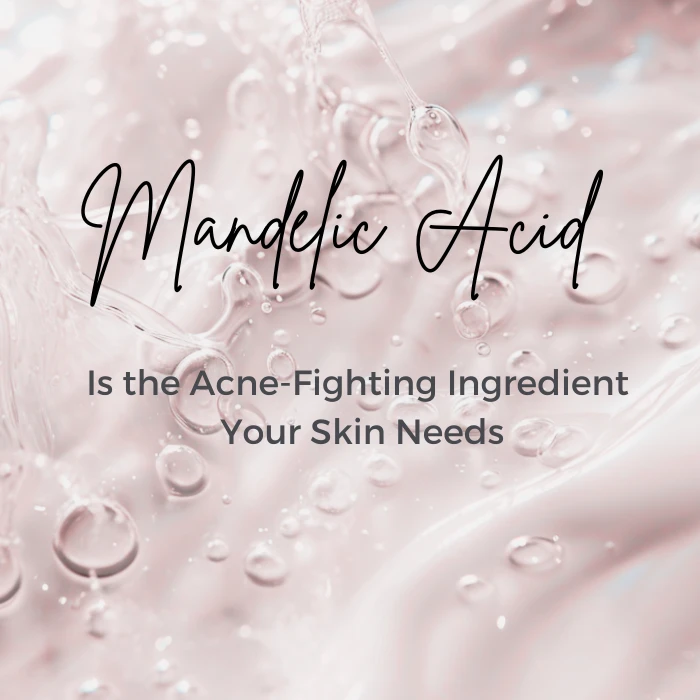
It’s important to note that AHAs are more suitable for dry skin types. Oily skin types would benefit more from using a BHA, also included in this list. Also, AHAs can temporarily thin the top layer of your skin, so you’ll need to be extra thorough with your daily sunscreen application. I apply this sunscreen every morning, even if it’s overcast outside or I’ll be inside most of the day.
BHA (Salicylic Acid)
There are some things that Korean skincare does well, and BHA is one of them.
Remember that AHAs are chemical exfoliants that work to break down the top layer that holds dead skin cells together? BHAs (beta hydroxy acids) are similar in that they are also chemical exfoliants; however, instead of working at the outermost layer of skin, these acids, typically in the form of salicylic acid derived from willow tree bark, work at a deeper level of the skin.
Unlike AHAs, which attract water molecules, Salicylic acid penetrates inside the pores and attracts oil, thereby unclogging them.
The properties of salicylic acid make it more suitable for oily and acne-prone skin types. Also, as with AHAs, you must be extra thorough in your daily sunscreen application, as these acids increase the skin’s sensitivity to UV radiation.
Learn why it is preferable to use a chemical exfoliant directly after cleansing and before using your toner:
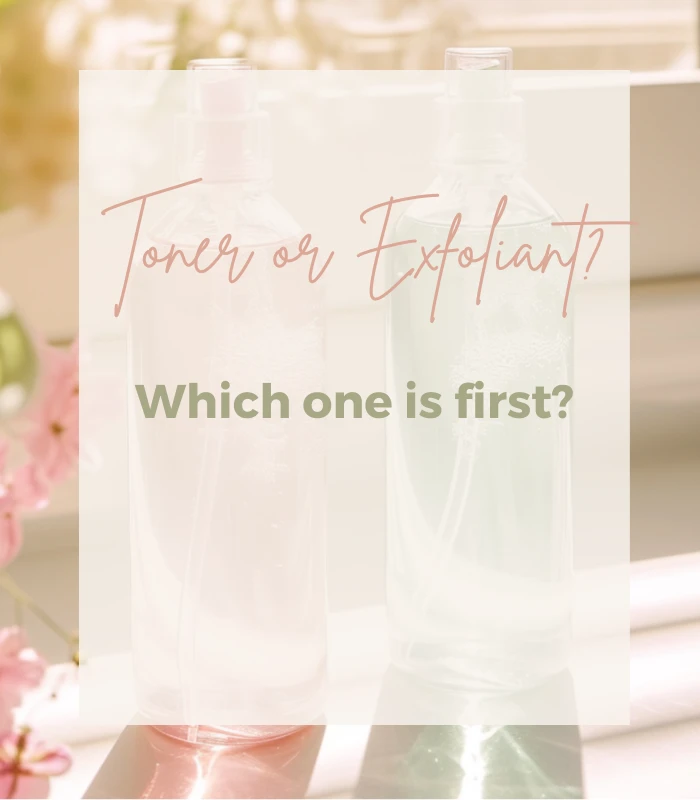
Fermented Rice Water
Fermented rice water has been a part of ancient Asian medicine and skincare for centuries as it boasts many benefits for the skin, especially anti-aging benefits.
A by-product produced during the fermentation of rice is kojic acid, a terrific ingredient for fading post-inflammatory hyperpigmentation (see separate entry for kojic acid in this list).
While you could ferment rice water just like ancient traditions, purchasing products specially formulated for skincare might be better to ensure you get the most of this ingredient.
Don’t Forget the SPF!
I’ve mentioned a few times throughout this post. No, I’m not trying to annoy you; I want to point out how important it is to remember your SPF to eliminate post-inflammatory hyperpigmentation.
Not only will sunscreen prevent any new hyperpigmentation from forming, but some skincare ingredients, especially actives such as AHA and BHA, actually make your skin more sensitive to UV radiation.
It would be pointless to spend your time and money on skincare products to fade your PIH only to do more damage when you’re out in the sun without sunscreen.
Bottom Line
Post-inflammatory hyperpigmentation sucks. Why do we need a reminder of the horrible experience that acne is? However, the good news is that PIH isn’t permanent, and so many skincare products can help you speed up the process of fading your PIH and other types of hyperpigmentation.
There are a few other ingredients you’ll find people mentioning here and there, such as hyaluronic acid, snail mucin, Centella Asiatica, and bee propolis. Although these are fantastic ingredients worth including in your skincare routine for their moisturizing and anti-inflammatory benefits, no scientific studies have shown that these ingredients inhibit tyrosinase or increase the cell turnover rate.
Happy shopping, and here’s to great skin in 2025!
Show Me Proof
- Sugimoto, Kazuhisa, Takahisa Nishimura, Koji Nomura, Kenji Sugimoto, and Takashi Kuriki. “Inhibitory effects of α-arbutin on melanin synthesis in cultured human melanoma cells and a three-dimensional human skin model.” Biological and Pharmaceutical Bulletin 27, no. 4 (2004): 510-514.
- Ertam, Ilgen, Basak Mutlu, Idil Unal, Sibel Alper, Bijen Kivcak, and Ozgen Ozer. “Efficiency of ellagic acid and arbutin in melasma: A randomized, prospective, open‐label study.” The Journal of dermatology 35, no. 9 (2008): 570-574.
- Inoue, Yu, Seiji Hasegawa, Takaaki Yamada, Yasushi Date, Hiroshi Mizutani, Satoru Nakata, Kayoko Matsunaga, and Hirohiko Akamatsu. “Analysis of the effects of hydroquinone and arbutin on the differentiation of melanocytes.” Biological and Pharmaceutical Bulletin 36, no. 11 (2013): 1722-1730.
- Lowe, Nicholas J., Dalia Rizk, Pearl Grimes, Mavis Billips, and Stephanie Pincus. “Azelaic acid 20% cream in the treatment of facial hyperpigmentation in darker-skinned patients.” Clinical therapeutics 20, no. 5 (1998): 945-959.
- Khodaeinai, Effat, Shahla Babaeinejad, Mehdi Amirnia, Javad Shokry, L. R. Karimi, Daniel F. Fouladi, and Kamran Sedaghat. “Efficacy of 10% azelaic acid gel with hydro-alcoholic or alcohol-free bases in mild to moderate acne vulgaris; the first clinical trial.” Journal of Medical Sciences (Faisalabad) 14, no. 2 (2014): 87-91.
- Hashim, Peter W., Tinley Chen, Julie C. Harper, and Leon H. Kircik. “The Efficacy and Safety of Azelaic Acid 15% Foam in the Treatment of Facial Acne Vulgaris.” Journal of Drugs in Dermatology: JDD 17, no. 6 (2018): 641-645.
- Garcia, Alicia, and James E. Fulton Jr. “The combination of glycolic acid and hydroquinone or kojic acid for the treatment of melasma and related conditions.” Dermatologic surgery 22, no. 5 (1996): 443-447.
- Fu, Boqiang, Huan Li, Xiaoru Wang, Frank SC Lee, and Shufen Cui. “Isolation and identification of flavonoids in licorice and a study of their inhibitory effects on tyrosinase.” Journal of agricultural and food chemistry 53, no. 19 (2005): 7408-7414.
- Yokota, Tomohiro, Hiroyuki Nishio, Yasuo Kubota, and Masako Mizoguchi. “The inhibitory effect of glabridin from licorice extracts on melanogenesis and inflammation.” Pigment cell research 11, no. 6 (1998): 355-361.
- Tanno, O., Ota, Y., Kitamura, N., Katsube, T., & Inoue, S. (2000). Nicotinamide increases biosynthesis of ceramides as well as other stratum corneum lipids to improve the epidermal permeability barrier. British Journal of Dermatology, 143(3), 524-531.
- Soma, Yoshinao, Masato Kashima, Akiko Imaizumi, Hideto Takahama, Tamihiro Kawakami, and Masako Mizoguchi. “Moisturizing effects of topical nicotinamide on atopic dry skin.” International journal of dermatology 44, no. 3 (2005): 197-202.
- Navarrete-Solís, Josefina, Juan Pablo Castanedo-Cázares, Bertha Torres-Álvarez, Cuauhtemoc Oros-Ovalle, Cornelia Fuentes-Ahumada, Francisco Javier González, Juan David Martínez-Ramírez, and Benjamin Moncada. “A double-blind, randomized clinical trial of niacinamide 4% versus hydroquinone 4% in the treatment of melasma.” Dermatology research and practice 2011 (2011).
- Hakozaki, T., L. Minwalla, J. Zhuang, M. Chhoa, A. Matsubara, K. Miyamoto, A. Greatens, G. G. Hillebrand, D. L. Bissett, and R. E. Boissy. “The effect of niacinamide on reducing cutaneous pigmentation and suppression of melanosome transfer.” British Journal of Dermatology 147, no. 1 (2002): 20-31.
- Bissett, Donald L., John E. Oblong, and Cynthia A. Berge. “Niacinamide: AB vitamin that improves aging facial skin appearance.” Dermatologic surgery 31 (2005): 860-866.
- Draelos, Zoe Diana, Keith Ertel, and Cindy Berge. “Niacinamide-containing facial moisturizer improves skin barrier and benefits subjects with rosacea.” CUTIS-NEW YORK- 76, no. 2 (2005): 135.
- Shalita, Alan R., J. Graham Smith, Lawrence Charles Parish, Michael S. Sofman, and Dan K. Chalker. “Topical nicotinamide compared with clindamycin gel in the treatment of inelammatory acne vulgaris.” International journal of dermatology 34, no. 6 (1995): 434-437.
- Draelos, Zoe Diana, Akira Matsubara, and Kenneth Smiles. “The effect of 2% niacinamide on facial sebum production.” Journal of Cosmetic and Laser Therapy 8, no. 2 (2006): 96-101.

